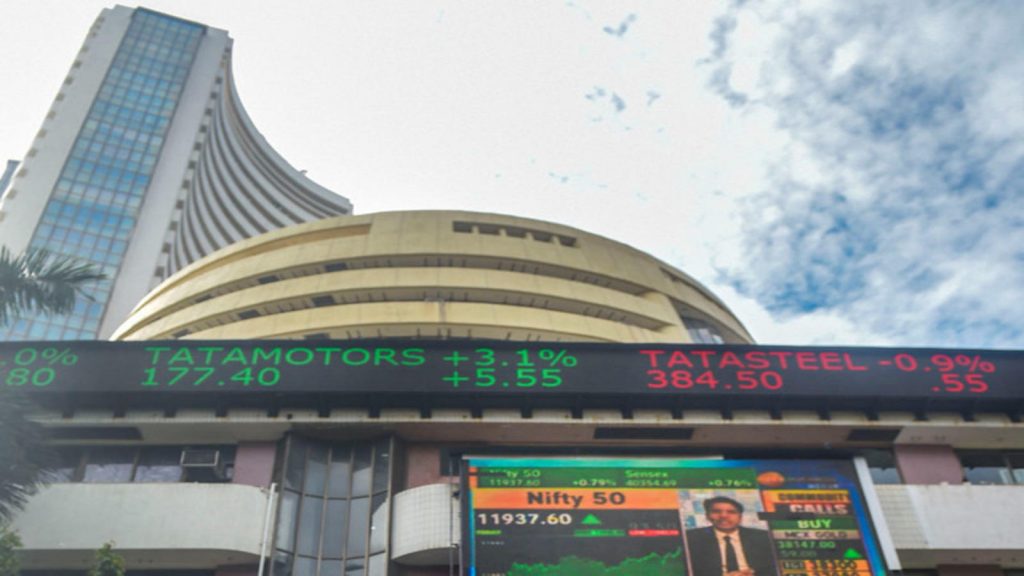New Delhi: Billionaire Gautam Adani has said India is at a dramatic inflexion point from where its economy will grow to ten times by 2050 with the nation having several trillion-dollar companies and cheapest power from renewable energy.
In his talk on ‘Incredible India and the opportunities ahead for India’ at the TiE Global Summit, Adani saw India’s GDP rising to USD 28 trillion by 2050 from the current USD 2.8 trillion, stock market valuation swelling to USD 30 trillion and a USD 10 trillion retail market. Plus the nation will be home to one in every three middle-class people in the world.
A combination of “India’s soft power with the hard power of a USD 28 trillion GDP and a USD 30 trillion value stock market will give an incredible nation that is taking the journey to becoming the greatest opportunity of the 21st century,” he said.
The Indian stock market indexes – assuming a conservative CAGR of 9 per cent – would have increased by a factor of 13x, putting the Sensex in the range of 6,00,000. “Most likely, this index will be an order of magnitude higher given India’s main growth is still ahead of it,” he said. “I would also expect that by 2050, India would have created several of its own trillion-dollar value companies.”
Just the retail segment by itself will be worth USD 10 trillion. “India will be the target investment of every global company,” he said.
Adani, who heads a ports-to-energy conglomerate, said the global GDP at present is USD 85 trillion dollars of which India is USD 2.8 trillion.
“In 2050, the global GDP is expected to be USD 170 to 180 trillion and the Indian GDP – then at about USD 28 trillion – will contribute over 15 per cent to the global economy,” he said. “I fully expect this to be the case as a lot of the necessary structural reforms that were needed are now getting in place and these reforms lay the foundation for accelerating our national growth.”
Listing out advantages in India’s favour, he said by 2050, the country’s population is expected to be 1.6 billion.
Adani, who had earlier this year set a goal of his group becoming the world’s largest renewable power company by 2025, said the marginal cost of electricity will continue to drop sharply as the renewable energy boom accelerates and the country will produce the cheapest electricity from renewable energy sources.
“In my view, India is today at a dramatic inflexion point. I believe that over the next few decades India will have firmly positioned itself as the greatest opportunity of the 21st century and become even stronger the year 2050 onwards,” he said.
There, however, will be challenges such as periods of slowdown that every large economy goes through.
“Yes, there will remain difficult challenges for India to overcome. But, there simply cannot be any denial of the scale of the opportunity that awaits India,” he said.
“One in every three of the world’s middle-class consumer will be Indian and India will form the largest global middle-class. This middle-class will insulate India and drive an unmatched rate of internal consumption – no nation has ever created such a massive middle class,” he said.
Adani said ever since the first industrial revolution in 1760, energy has formed the lifeline of a nation’s economy. Also, increasing research shows the role of information and communication technologies in driving economic growth and a country’s productive capacity.
“Today both the field of energy and the field of technology are rapidly intersecting. I see this technology-energy intersection as being the single most defining factor to lift the balance of India’s population – not just out of poverty – but right into the middle-class bucket and leading to business models that will be transformational,” he said.
Elaborating, he said the marginal cost of electricity will continue to drop sharply as the renewable energy boom accelerates. “And India will be the least expensive producer of renewable energy. After all, the sun and wind will always be free and there is literally no limit to how many electrons we will be able to pull out from a square inch of silicon.”
This mix of solar, wind and storage will be even more transformational due to its combination with digitisation.
“Just like energy, I also believe that the cost of digitisation based on storage, processing, and networking will continue to follow a steep decline curve for several decades and the marginal cost of managing bits and bytes will keep dropping,” he said.
Adding to this is the fact that India has the cheapest broadband services and mobile devices of all nations in the world, with data prices having dropped 95 per cent in the last five years and consumption having increased 56 times.
“Therefore, in addition to being individually disruptive, when combined, the implications of marginal cost-based renewable energy and information technology are stunning.”
“Therefore, I expect that inexpensive green power in combination with digital technologies – that include sensors and internet of things, artificial intelligence and machine learning, 5G and cloud infrastructure – will all converge to give us the ability to economically micro-size several processes, and convert every process into a service,” he said.
PTI

